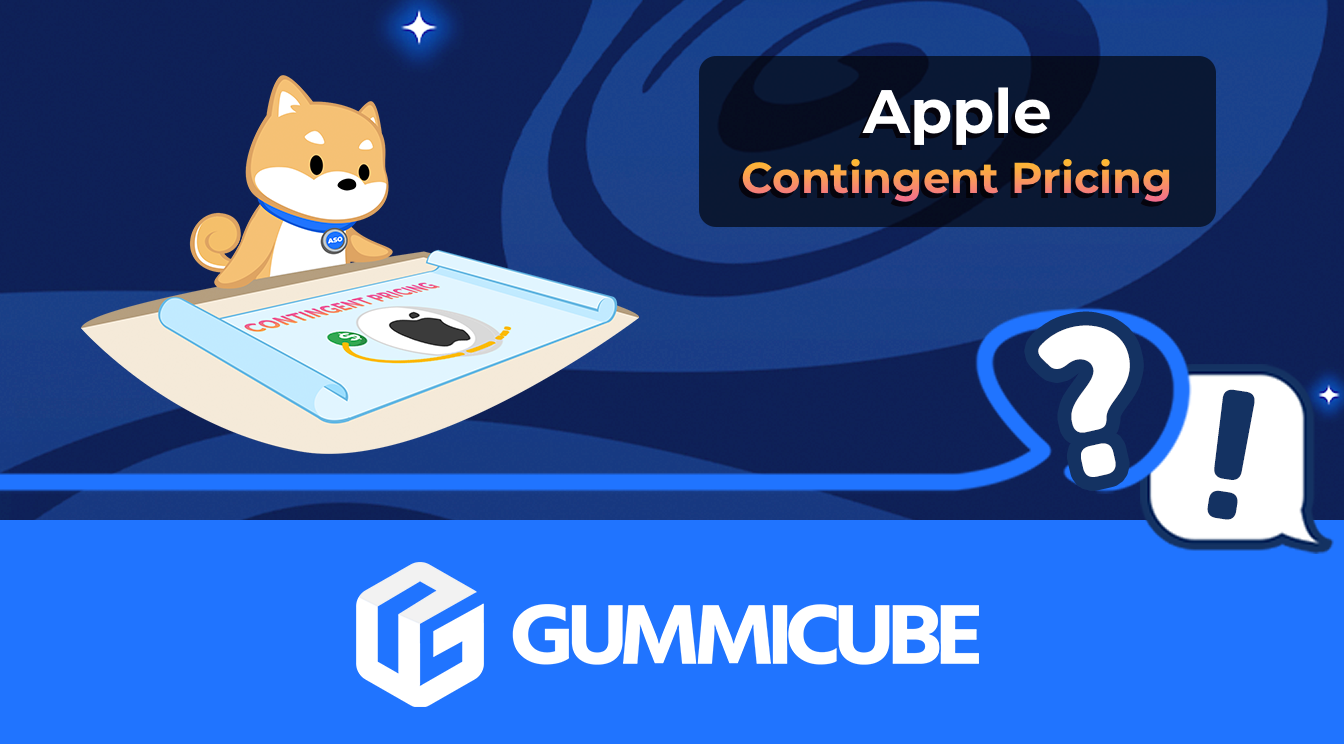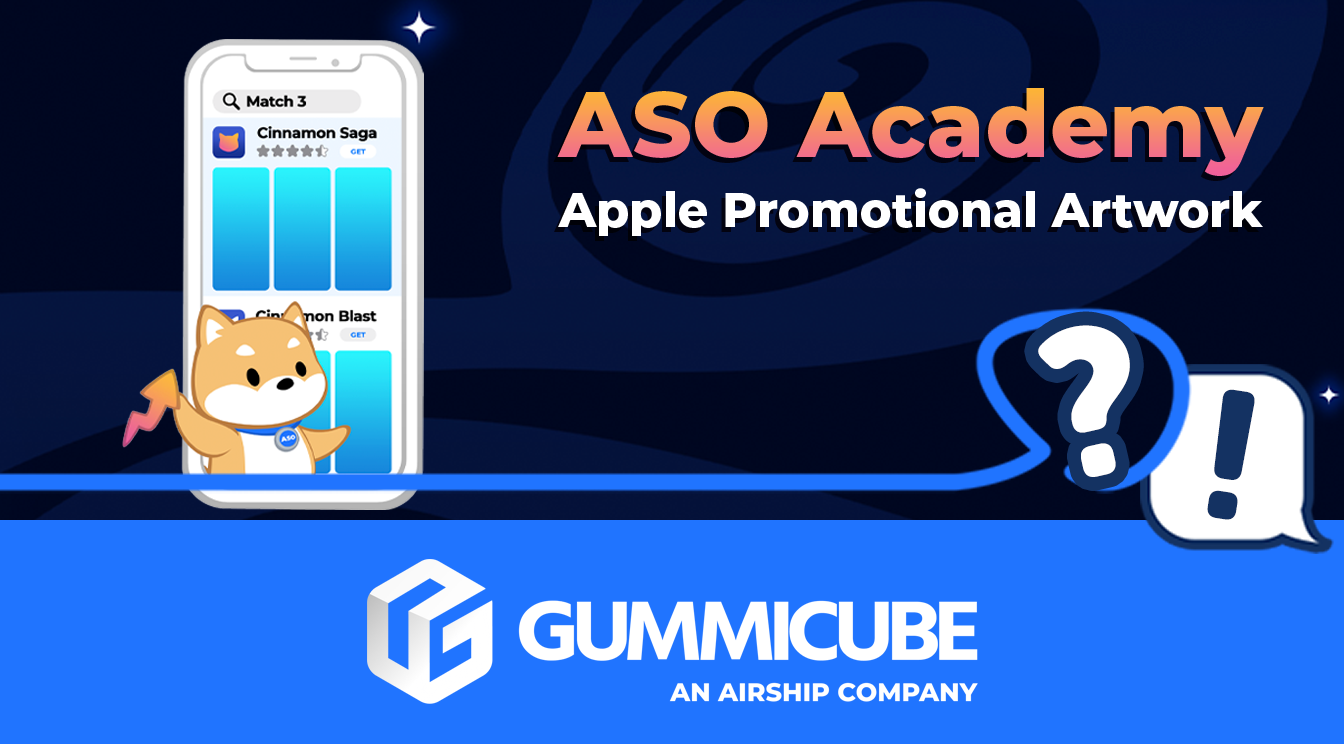ASO Academy
How to Perform a Mobile App Competitive Analysis
March 10th, 2023


by David Quinn
VP of Strategy & Partnerships at Gummicube, Inc.
Of all the intricacies that make up a mobile app marketing strategy, performing quality analysis of competitors ranks among the top priorities. To position yourself as intended, you have to first gauge the current state of the market and how existing players are performing to find gaps you can capitalize on.
In this ASO Academy we’ll take a dive into what steps you can take to make sure your mobile app competitive analysis helps set you up for success.
Audit Your Mobile App
To understand how you can adapt to current market conditions you should first identify the core features that make up your app and how they relate to potential competitors. With a clear idea of how to position yourself in the market, you can target your niche more effectively and know which apps can be considered direct competitors versus others.
Ask yourself the following so you can narrow down exactly how you should position your app and how you can more easily pinpoint competitors:
What are the primary needs you intend to fulfill with your app?
Analyze the fundamental features that make up your app for a broad understanding of how it fits in the market. Starting with a simple categorization like “budget app” is an effective first step to positioning yourself.
Who does your app help?
Your target demographic will determine how you structure several aspects of your app listing, from creatives to the tone of voice you adopt with any text copy. Additionally, it will make identifying your most similar competitors easier since you’re trying to capture the same audience.
How does your app help users?
Taking the previous “budget app” example. What specific elements of your app help users to budget? Is it intuitive UI, unique technology, or spending alerts? Knowing how your app benefits users can aid in identifying your unique value proposition when later researching competitors.
Identify Your Mobile App Competitors
With a clear understanding of how your app is positioned in the market, you can now begin to research relevant competitors. The key here is to make sure you are selecting the right apps – ones that closely resemble your core features and target demographic as much as possible. Narrowing down on a specific niche means you’ll be able to identify ASO trends that directly affect your users and that competitors are most likely capitalizing on in their strategies.
How do you identify relevant competitors? You can manually search the App Store and Play Store for apps similar to yours by performing a keyword search. Ideally, you’d select terms you are currently including in your metadata, whether this be in your title, subtitle, keyword bank, descriptions, or other fields.
Alternatively, you can leverage comprehensive ASO tools that can help pinpoint the most relevant competitors. Quality third party ASO technology is capable of scanning the App Store and Play Store for metadata commonalities found between your app and similar ones making competitive research faster and easier than if you were to individually try to identify competitors.
Some important factors to consider when determining which apps are true competitors versus those that aren’t:
Are the app’s core features similar to yours?
Your budgeting app may be in the same category as a mobile banking app, and it may even be targeting the same users with similar keywords. However, the nature of the app is fundamentally different.
Is the competitor targeting the same demographic?
While the core features may be similar, at times the target demographic can differ. Elements like the tone of voice or overall brand presentation may cater to an audience of a specific age, gender, or diferentiating element. This means that while the apps’ main functions are close to identical, how they operate varies due to the user base they target.
Is their business model similar to yours?
The way an app offers its product is another indicator of whether or not they can be considered competitors. Are certain features locked behind a paywall? Is it a subscription service, while yours is free? These are important considerations when it comes time to determine whether an app is a competitor or if there are strategies being implemented that could serve your app as well.
Recognize ASO Best Practices
After narrowing down on who your competitors are, your goal is to ultimately outperform them in the long run. But to be able to do this, it’s important to understand what currently works in the market for the highest performing competitors so you can implement those same strategies.
When it comes to your mobile app marketing strategy, recognizing ASO best practices among the top ranking apps’ metadata strategy and creative assets is key to improving.
Implement The Right App Keywords, The Right Way
Effective metadata structuring can act as a strong foundation for the rest of your App Store Optimization strategy. The keywords you select, how you implement them, and adapt them over time will be a determining factor in your organic app store growth.
Try searching for similarities within metadata elements of your top ranking competitors. Some strategies include skimming for keywords common across app titles and subtitles in the App Store, and app titles, short description, and full description for Google Play.
Hop On App Creative Trends
Your app creatives are one of the most important converting elements found on your app listing page. In an increasingly visual world, videos and pictures are dominating the scene when it comes to attracting user attention. Because of this, you’ll want to be on top of your game when it comes to implementing the latest trends found among top competitors.
Maybe apps in the top 5 positions are making use of App Preview Videos. Are they calling out specific keywords in their images? Are in-game characters effective in drawing attention? These are all commonalities that can potentially be contributing to higher downloads for apps that you should be aware of when updating your own creatives.
Get Started With Your Mobile App Marketing
The first step to any product launch is being aware of the current state of your market so you can identify competitors and differentiate yourself appropriately. As part of your App Store Optimization, an in-depth competitor analysis can be the difference between aimless positioning in the App Store and Play Store versus strategic updates backed by quality research.
Perform an app audit, get comprehensive competitor data, and take your App Store Optimization to the next level – all with the help of Gummicube!
Similar Articles

Posted on July 25th, 2024
Soon developers will be able to extend their customer lifetime value with a handy new way of providing subscription offers directly through Apple. Contingent Pricing looks to act as a revolutionary new system for leveraging new upsell & cross-sell opportunities all within Apple’s ecosystem.

Posted on June 28th, 2024
Have you ever A/B tested your Google Play listing? If not, you're probably navigating the Play Store marketing blind, and leaving valuable installs on the table.

Posted on April 12th, 2024
Have you been selected for an App Store feature? Your Promotional Artwork is a key element in making the most of your featured position. Here's how you can use it to your advantage.





